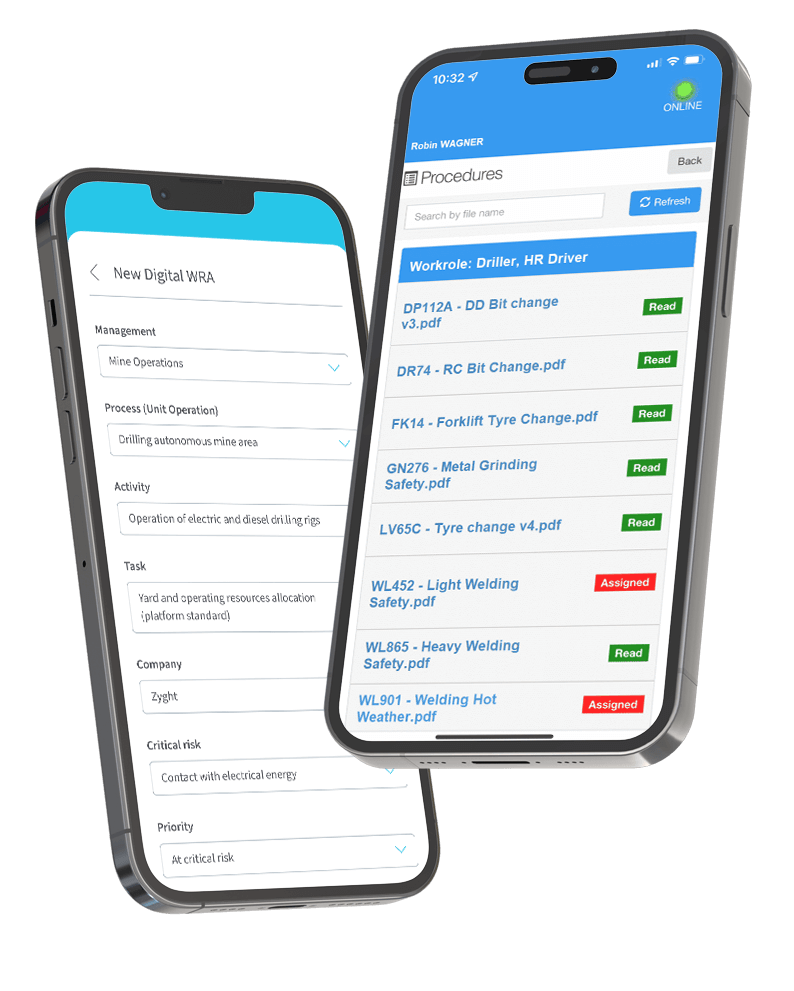Why Platforms Like ZYGHT Are Paving the Way for VR Integration in Safety Training
As industries evolve and workplace risks become more complex, organizations are turning to digital tools to manage Health, Safety, and Environment (HSE) programs with precision and agility.
While Virtual Reality (VR) is gaining momentum as a transformative safety training tool, it’s the underlying digital infrastructure—like that provided by ZYGHT—that truly makes such innovation scalable, data-driven, and effective.
VR Training Is Coming—But It Needs a Strong Digital Backbone
Virtual Reality in HSE training offers realistic, immersive simulations of hazardous scenarios—ranging from emergency evacuations to equipment failures—allowing workers to train safely and repeatedly. But to successfully implement VR across a complex organization, companies first need to:
- Centralize incident and risk data
- Standardize safety procedures across teams and sites
- Ensure consistent audit and inspection workflows
- Track compliance and training performance in real time
That’s where ZYGHT comes in.
How ZYGHT Enables Innovation in HSE
ZYGHT is a cloud-based HSE management platform designed to digitalize and optimize every aspect of safety operations. While it does not currently include VR modules, its features lay the groundwork for immersive and AI-enabled technologies by:
- Providing a centralized database of risk events and incidents: Essential for identifying which scenarios to simulate in VR.
- Standardizing workflows for inspections, audits, and corrective actions: A consistent operational baseline is critical before layering in simulation training.
- Enabling real-time reporting and analytics: Future VR tools will depend on integrations with platforms like ZYGHT to analyze user performance and connect it with real-world safety data.
- Supporting multi-site operations and remote access: This is key to scaling VR training and other digital innovations organization-wide.
A Realistic View of the HSE Innovation Path
It’s easy to get excited about futuristic tools like VR, but in practice, the success of these tools hinges on the quality of your data, the strength of your digital infrastructure, and the maturity of your safety culture.
That’s why digital HSE platforms like ZYGHT are not just enablers—they are essential.
Rather than offering isolated “tech for tech’s sake,” ZYGHT empowers companies to:
- Identify training gaps through real data
- Target the right high-risk scenarios for deeper simulation
- Track ROI on safety initiatives, including future VR integration
Looking Ahead: ZYGHT’s Role in a Digitally Safer Future
ZYGHT may not offer VR now, but it plays a crucial strategic role in helping companies prepare for immersive HSE solutions. With strong digital systems in place, organizations can confidently adopt next-generation technologies like:
- VR training modules connected to incident data
- AI-driven risk prediction engines
- Augmented reality (AR) for field inspections
- Smart wearables integrated with the ZYGHT platform
Final Takeaway
Innovation in HSE starts with solid digital foundations. Virtual Reality may transform safety training, but without platforms like ZYGHT to anchor the data, process, and compliance side of safety, that transformation would be incomplete.
If your organization is planning to adopt advanced tools like VR, start by modernizing your safety systems—and ZYGHT is here to lead that journey.


